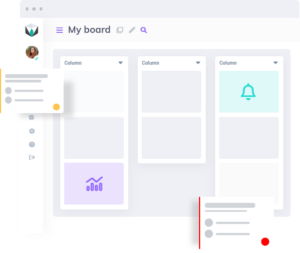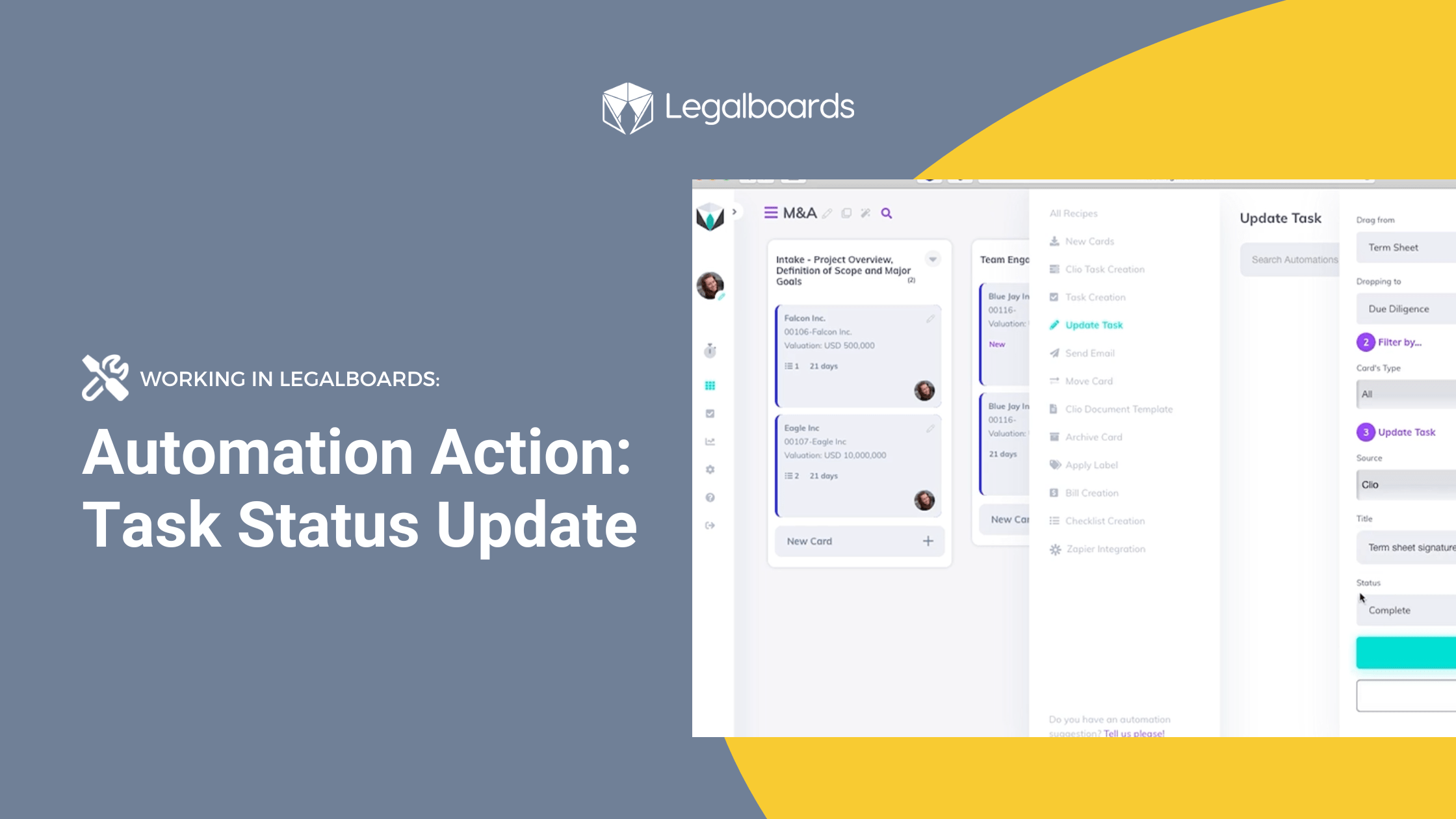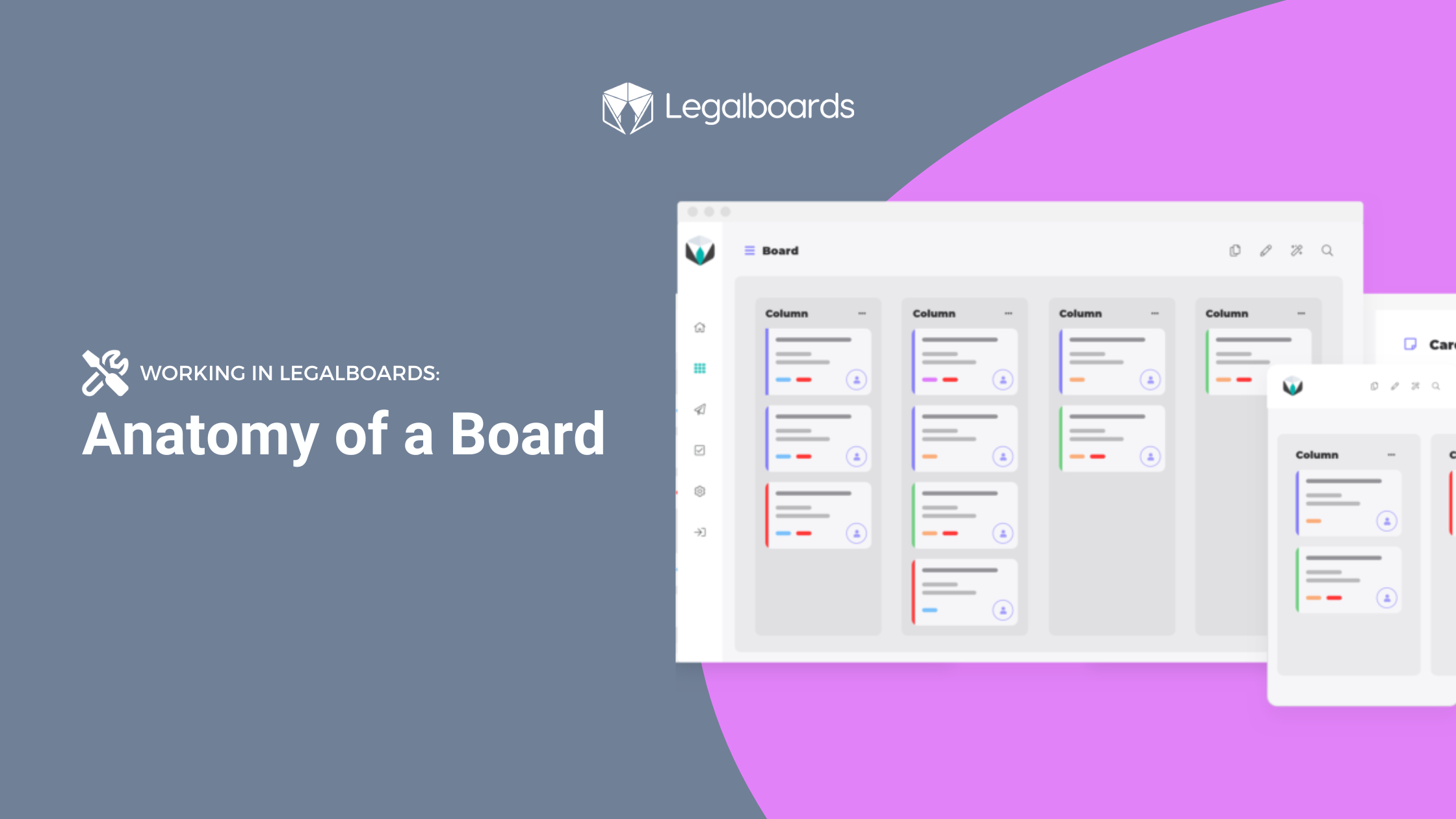We’re big fans of Kanban over at Legalboards, and we want to share with you why it’s not just for tech companies. Kanban can be used in multiple applications, including in a legal setting. When Kanban for lawyers is used, it can help improve practice management.
For many of us, changing what already works for our workflow is a lot less complicated than trying to completely reinvent it. As such, an important part of adopting Kanban is recognizing the effectiveness of its principles:
- Changing what you currently do to be more effective
- Encouraging leadership and collaboration
- Emphasizing client experience
Let’s take a closer look at each principle and how it can help your firm. Keep in mind that Kanban works best when it’s optimized to your needs. Knowing and identifying where you have bottlenecks is a key part of being able to implement effective agile methods.

Optimizing Current Processes
For some, it can be clear what works and what doesn’t. But making changes to current processes to improve them doesn’t need to be difficult or time consuming.
Kanban allows you to take a visual approach to understanding workflows. The process can be as simple or as complicated as the work it’s reflecting.
For example, if you specialize in estate planning, Kanban can be especially beneficial. Estate settlement can take several years and involves multiple steps, i.e., basic administration, tax filings, and probate court. Applying Kanban will improve the efficiency of turning these procedures visual. Different boards for different procedures can make this practice area more productive. And with the ability to visualize your workflow, you can easily identify potential roadblocks from looking at your boards.
As well, it’s important to continually improve your processes. Small changes can be much more effective rather than large (and often disruptive) changes.
Encouraging Leadership and Collaboration
It’s safe to say that when we feel empowered about our work, we often are more productive and feel more satisfaction from our work. Motivation matters and Kanban can help firms foster a positive environment.
Because Kanban helps improve processes and requires continual innovation, team members need to understand a couple of things.
- Priority of tasks;
- Strategies or processes to complete tasks; and
- Where they may require help/potential delays.
This understanding cannot be limited to management, legal professionals at all levels are also impacted. By understanding these three areas, teams can work more efficiently.
Emphasizing Client Experience Throughout The Process
Client experience is important and in order to maintain positive relationships. Any changes to how a firm operates need to take into account how clients will be impacted. At the core of Kanban, workflows are meant to be optimized for efficiency while taking into account the end-user’s needs.
That efficiency benefits two parties; your firm and your clients. By implementing Kanban (or other agile methods), you can provide more effective communication to both. Clients also benefit from an improved service because:
- Workflows are much more efficient,
- Delays can be somewhat prevented, and
- It’s easy to track how things are progressing.
Start Getting Organized
Want to learn a bit more about Kanban? Check out this article from Thomson Reuters, or one of our previous blogs. Kanban is a great approach to improving your workflow, which is why Legalboards uses a Kanban board within our interface. Set up a free demo session today, and see how you can get started.




